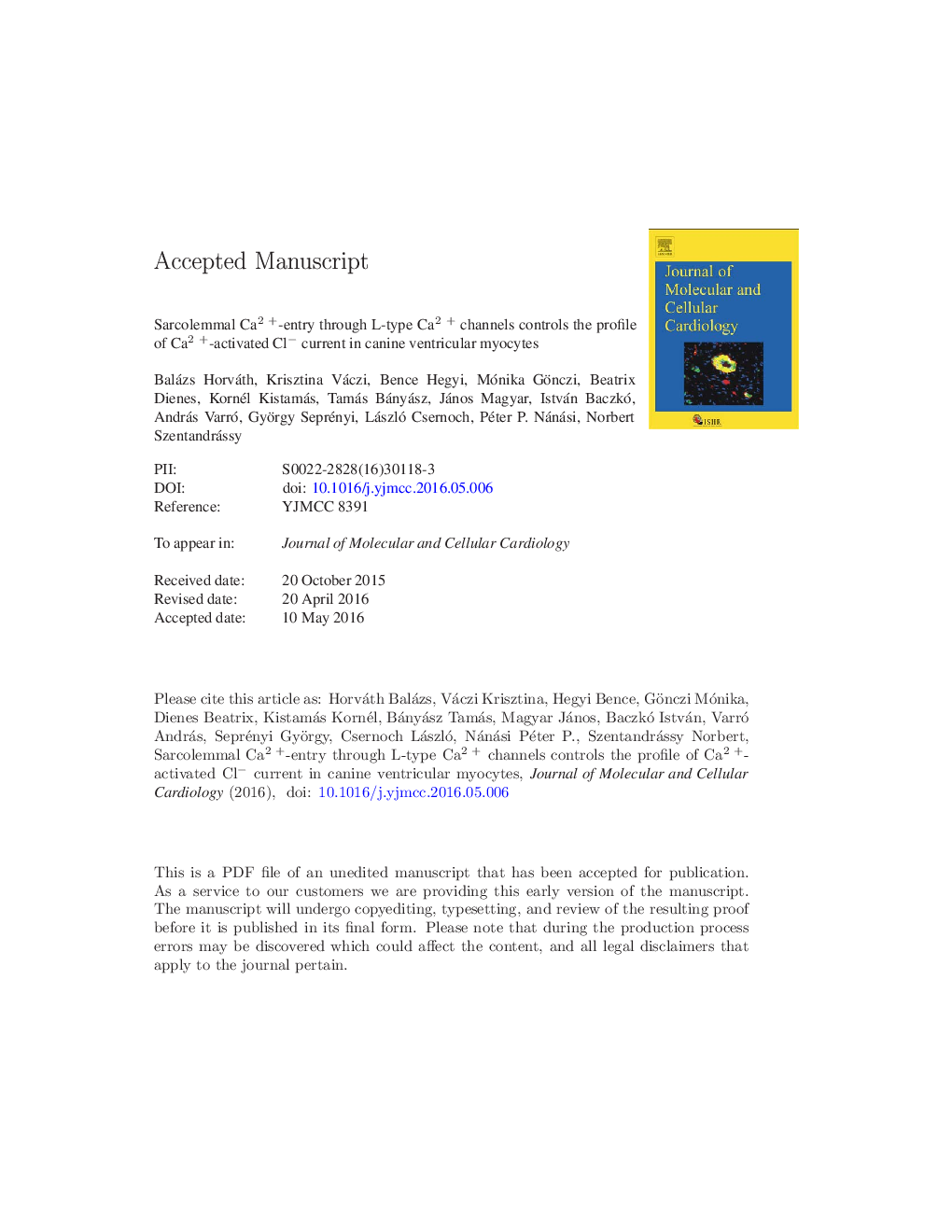| Article ID | Journal | Published Year | Pages | File Type |
|---|---|---|---|---|
| 8473754 | Journal of Molecular and Cellular Cardiology | 2016 | 27 Pages |
Abstract
Activation of ICl(Ca) in canine ventricular cells requires Ca2+-entry through neighboring L-type Ca2+ channels and is only augmented by SR Ca2+-release. Substantial activation of ICl(Ca) requires high Ca2+ concentration in the dyadic clefts which can be effectively buffered by BAPTA, but not EGTA.
Keywords
9-anthracene carboxylic acidICl(Ca)Ca2+-dependent inactivationSITSLarge-conductance Ca2+-activated K+ channelsIncXTMEM16A9-ACCaV1.2LTCCAPD90[Cl−]iDIDSRyRHEPESPCCCDICATIKSDAPIDAD4′,6-diamidino-2-phenylindole4-(2-Hydroxyethyl)piperazine-1-ethanesulfonic acidBKCaICa,LL-type Ca2+ current[Ca2+]iISOisoproterenolstandard error of the meanSarcoplasmic reticulumPearson correlation coefficientintracellular Cl− concentrationSEMaction potentialdelayed afterdepolarizationHuman cardiomyocytesL-type Ca2+ channelCICRCalcium transientRyanodine receptor
Related Topics
Life Sciences
Biochemistry, Genetics and Molecular Biology
Cell Biology
Authors
Balázs Horváth, Krisztina Váczi, Bence Hegyi, Mónika Gönczi, Beatrix Dienes, Kornél Kistamás, Tamás Bányász, János Magyar, István Baczkó, András Varró, György Seprényi, László Csernoch, Péter P. Nánási, Norbert Szentandrássy,
